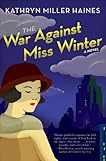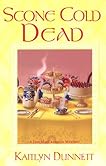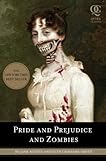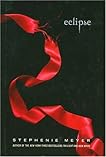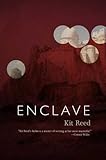

I rarely read two books in the series back to back. I like to try and vary my book choices. But a holiday bout of the flu left me on the couch and ready to read the next two Bear Collector mysteries by John J. Lamb. I finished
The False-Hearted Teddy and picked up
The Crafty Teddy next. Lamb's series has been described as a police procedural cozy. Those two terms seem at odds for a conventional cozy mystery reader. But after reading
The Crafty Teddy I better understand the designation.
It is refreshing to read a cozy mystery written by a man. I would argue that the vast majority of cozies are written and read by women. Lamb's stories add a fun twist with a sarcastic, punny, ex-cop for the main character. He loves to insert sexual innuendos and groan-worthy puns throughout the story - characteristics that I haven't found in the typical cozy.
As the series progresses the stories have become more police procedural as the main characters become involved with the local sheriff's office and work in an official capacity to assist with criminal investigations. But, given that the plots revolve around the teddy bear making world the stories are firmly entrenched in cozy-land.
The False-Hearted Teddy takes place at a bear show in a hotel in Baltimore. Brad and Ash Lyons have set up shop to sell their homemade bears when one of the other vendors is murdered. Confrontational cops cause Brad to investigate on his own. By the middle of the book he allies forces with the police and the book becomes a more familiar police procedural with rules and regulations, car chases, and witness interviews making up the bulk of the story. However, Lamb convincingly remains wedded to the cozy style of writing and does not fall into too much heavy police lingo.
I like this story, but it wasn't my favorite. I found the good cop/bad cop a bit heavy handed. And the transition to allies was too easy. Nonetheless, it was a fun, light read. Oh, and a pet peeve, the blurb on the back cover. In this case, it was flat out wrong. It says the cops thing the murder was not a murder - which is not true. Who writes those things?
In The Crafty Teddy Brad and Ash are back at home in the Shenandoah Valley. The book opens with the theft of two of their antique bears. In a seemingly unconnected fashion three Japanese Yakuza (gangsters) show up in town to visit the local history museum. Brad, questioning the motives of Japanese businessmen being interested in quaint Virginia history, he follows them and finds a dead body.
Lambs explanation for the presence of the Japanese is an amusing twist in cozy-land. I found myself smiling at the image of a Japanese gangster wandering through Boyds Bears in Pennsylvania picking out cute teddy bears.
In this book Lyons becomes an employee of the local sheriff's office and the percentage of police focus in this book has grown exponentially since the first. He successfully blends the two styles by giving weight to the investigation and legitimacy for the characters to have guns and be tramping through suspects homes. Yet he interjects a light fun air and a focus on teddy bear making that places the series firmly in cozy land.
My only complaint about this book is Lamb's description of the UVA History department. But that could be because I know too much about that particular school and faculty.
I have to say, while I originally dismissed a teddy bear making series as bad fluff in the world of cozy mysteries this has actually become a preferred series. I will happily recommend it to other mystery readers.
* * * *
If you liked the Bear Collector Mysteries try:
 This year for Christmas my parents gave my husband and I each a $50 gift certificate to the bookstore. Glee! This afternoon we sat down with the computer and put together a list of all the books we have been wanting that are not easily accessible from the library. We decided to go online rather than in the store because too often we can't find the books we want when we're shopping (I could go on a rant about bookstores becoming gadget, toy, and stuffed animal stores rather than bookstores, but I'll save that for another day).
This year for Christmas my parents gave my husband and I each a $50 gift certificate to the bookstore. Glee! This afternoon we sat down with the computer and put together a list of all the books we have been wanting that are not easily accessible from the library. We decided to go online rather than in the store because too often we can't find the books we want when we're shopping (I could go on a rant about bookstores becoming gadget, toy, and stuffed animal stores rather than bookstores, but I'll save that for another day). 
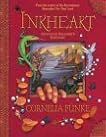


 I rarely read two books in the series back to back. I like to try and vary my book choices. But a holiday bout of the flu left me on the couch and ready to read the next two Bear Collector mysteries by John J. Lamb. I finished The False-Hearted Teddy and picked up The Crafty Teddy next. Lamb's series has been described as a police procedural cozy. Those two terms seem at odds for a conventional cozy mystery reader. But after reading The Crafty Teddy I better understand the designation.
I rarely read two books in the series back to back. I like to try and vary my book choices. But a holiday bout of the flu left me on the couch and ready to read the next two Bear Collector mysteries by John J. Lamb. I finished The False-Hearted Teddy and picked up The Crafty Teddy next. Lamb's series has been described as a police procedural cozy. Those two terms seem at odds for a conventional cozy mystery reader. But after reading The Crafty Teddy I better understand the designation.



